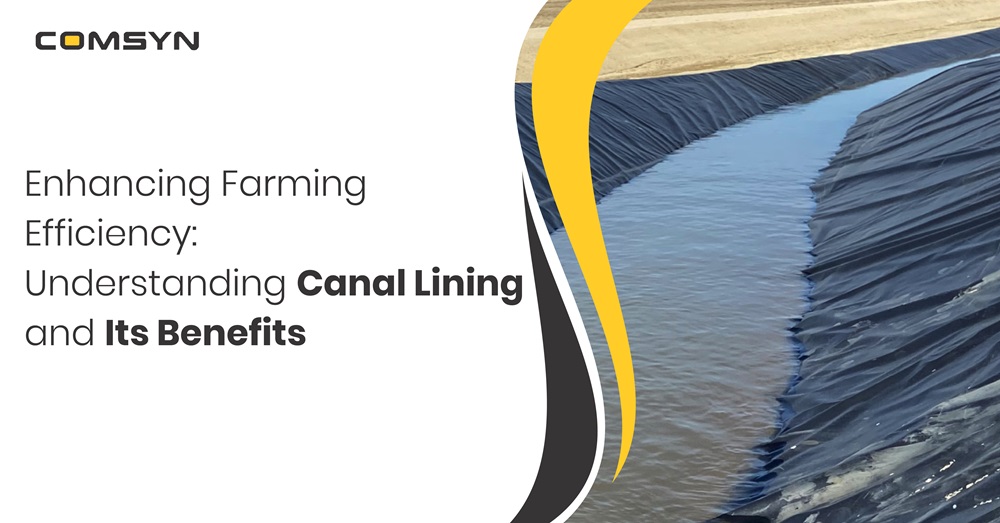Canal lining is a critical practice in agriculture aimed at improving water management efficiency. By providing a protective layer to the canal bed and banks, it minimizes water loss due to seepage and enhances water delivery precision to farms. In this blog, we delve into the concept of canal lining and explore its significant advantages for farmers. Canal lining involves the application of various materials such as concrete, plastic, clay, or geomembranes to the beds and sides of irrigation canals. This lining acts as a barrier, reducing water seepage into the surrounding soil and thereby conserving water resources. One of the primary benefits of canal lining is its ability to significantly reduce water loss through seepage. Unlined canals can lose a considerable amount of water to the soil, especially in regions with high permeability. By lining the canals, farmers can conserve precious water resources, ensuring a more sustainable water supply for irrigation. Lined canals offer improved control over water flow and distribution. The smooth, impermeable surface reduces frictional losses and allows for more precise water delivery to farms. This ensures that crops receive adequate irrigation, promoting optimal growth and higher yields. Lined canals require less maintenance compared to unlined ones. Without the constant need to repair eroded banks or address seepage issues, farmers can save both time and resources. This allows them to focus more on productive farming activities rather than canal upkeep. Uncontrolled seepage from unlined canals can lead to soil erosion along the canal banks, compromising their stability. Canal lining helps prevent soil erosion by containing water within the canal structure, thereby safeguarding the surrounding land from degradation. Lined canals create an unfavorable environment for weed growth compared to unlined ones. The reduced seepage means less moisture available for weed proliferation along the canal banks. This helps farmers in weed management efforts and reduces competition for water and nutrients with crops. Canal lining can also contribute to improved water quality. With reduced seepage, there is less likelihood of contaminants leaching from the soil into the water, resulting in cleaner irrigation water for crops. This is particularly beneficial for crops sensitive to waterborne pollutants. The selection of canal lining depends on several factors that influence its effectiveness, cost-efficiency, and longevity. These considerations ensure that the canal lining serves its purpose effectively while addressing environmental and economic concerns: Incorporating canal lining into irrigation infrastructure offers numerous benefits for farmers, ranging from water conservation to enhanced crop productivity. By investing in this sustainable practice, farmers can optimize water use efficiency, minimize environmental impact, and ultimately, improve the profitability and resilience of their farms in the face of water scarcity challenges.Enhancing Farming Efficiency: Understanding Canal Lining and Its Benefits

Understanding Canal Lining
Advantages of Canal Lining
Water Conservation:
Enhanced Water Delivery Efficiency:
Reduced Maintenance Needs:
Prevention of Soil Erosion:
Minimized Weed Growth:
Enhanced Water Quality:
Factors Influencing Canal Lining Selection
Conclusion
- About Us
- Products
- Markets Served
-
- Investor Relation
- Board Of Directors
- Committees Of Board
- Corporate Governance
- Financials
- Annual Report
- Key Managerial Positions
- Shareholding Pattern
- Notices
- Policies Programme
- Announcements
- Statement of Investor Complaints
- Unpaid & Unclaimed Dividend
- Prospectus
- Investors Contact
- Subsidiary Financials
- IEPF
- Preferential Issue – 2024
- MOA & AOA
- Integrated Filing
- Sustainability
- Contact Us
- TechTex
- Brochure

